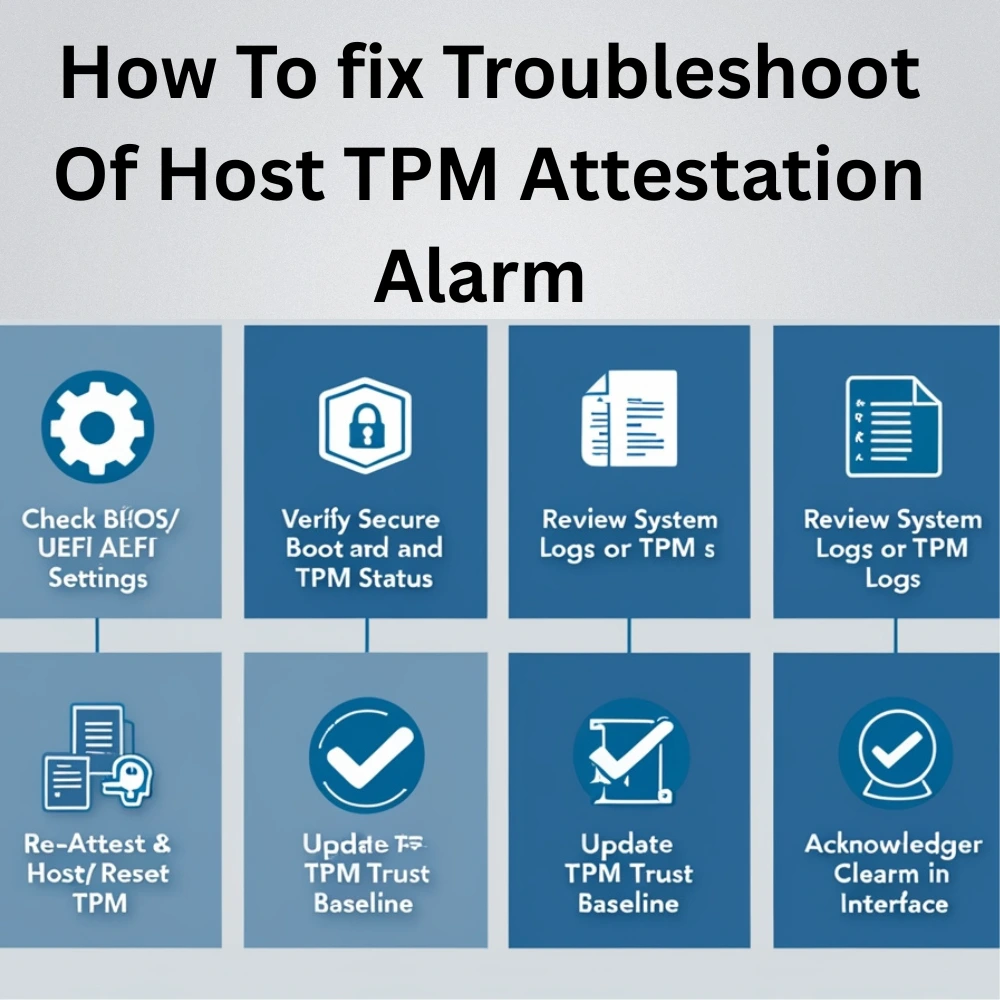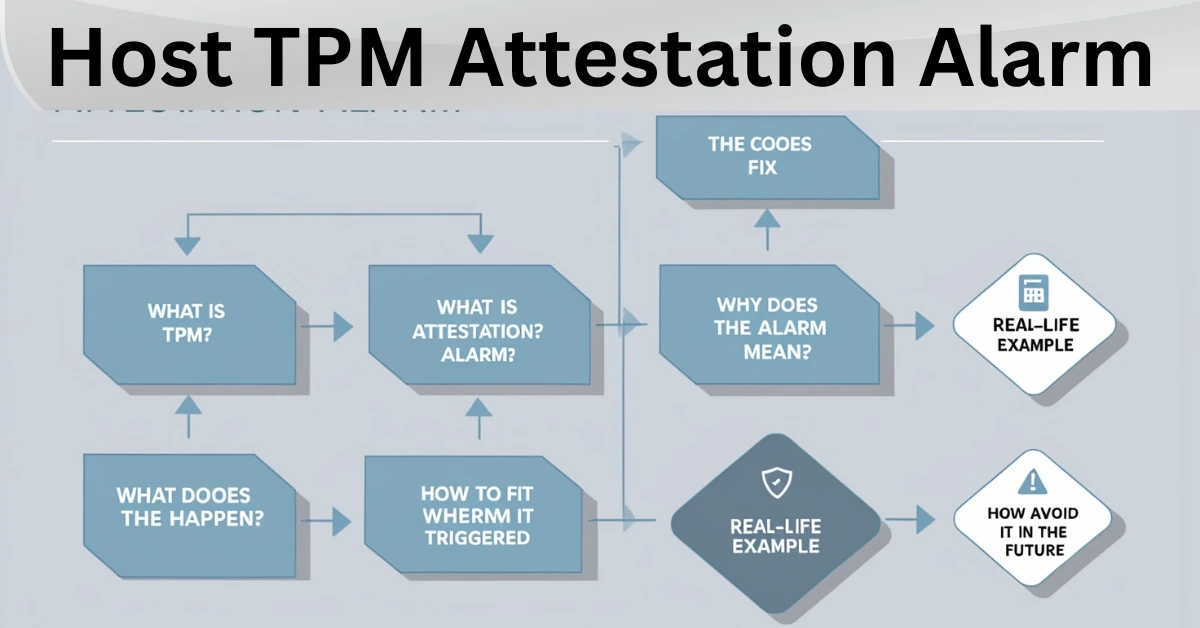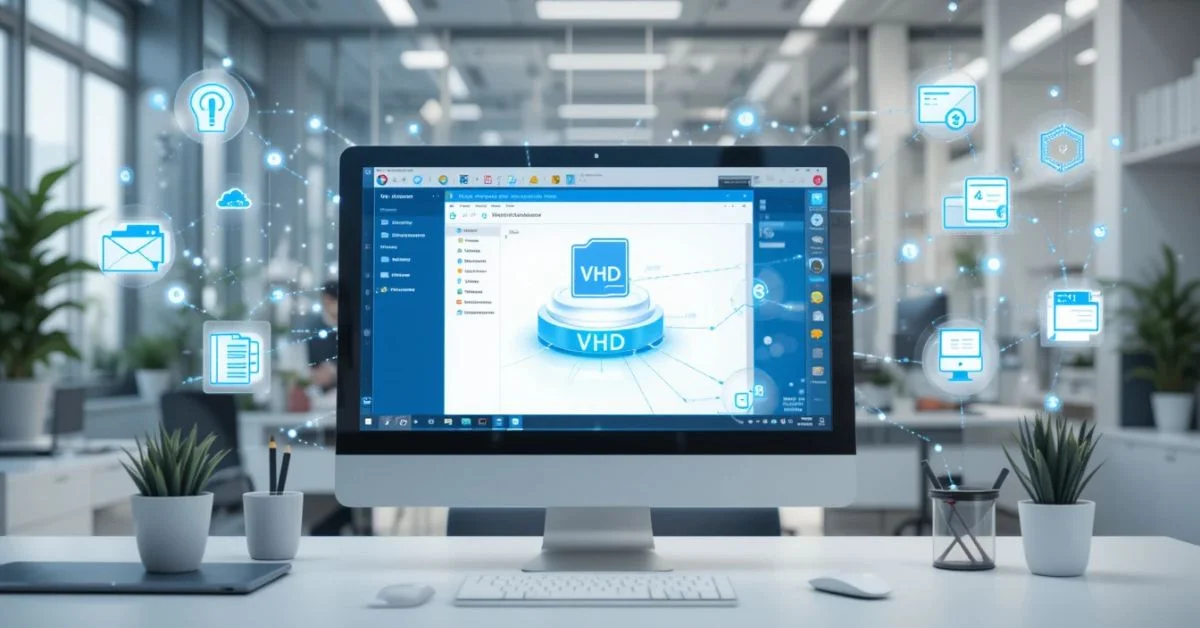In today’s digital world, keeping computers and servers secure is more important than ever. The important security feature is the Trusted Platform Module (TPM), a small chip built into most modern motherboards. It helps safeguard sensitive information and supports secure system operations.
What Does “Host TPM Attestation Alarm” Mean?
This alarm means that your computer or server has failed a security check related to TPM. The term host refers to the system that’s being checked usually a server or virtual machine. So, when we say Host TPM Attestation Alarm, we mean the computer has found something unusual during its startup checks using the TPM chip.
This might happen because:
- Something changed in the system’s hardware or software
- A firmware or BIOS update happened
- Someone tried to tamper with the system
- TPM was reset or misconfigured
- The TPM is broken or not working properly
Think of this alarm like a car’s dashboard warning light. It doesn’t always mean there’s a serious problem, but it does mean you should take a look and make sure everything’s okay.
Why Does It Happen?
There are many reasons you might see this alarm. Here are some of the most common:
- Software Update: When you update the BIOS, operating system or bootloader. TPM may notice the changes and raise a flag, even if the update is safe.
- TPM Reset: If the TPM chip was cleared or reset, the system might not recognize the keys it used before causing a failed attestation.
- Hardware Changes: Adding or removing hardware (like RAM or a new hard drive) can change the system’s boot profile and leading to an alarm.
- Corrupted Firmware: If part of the firmware was damaged or changed incorrectly, TPM might think someone is trying to attack the system.
- Boot Configuration Issues: A change in Secure Boot or boot settings in BIOS/UEFI might trigger a mismatch.
What Happens When the Alarm Is Triggered?
When this alarm goes off there are different things can happen depending on your system and its settings:
- Notification Only: Some systems just show a warning in the admin panel or dashboard.
- Restricted Access: If the system is part of a secure network, it might be blocked from accessing certain areas until the issue is fixed.
- Isolation: The system may be placed in quarantine to prevent it from spreading any possible threats.
For example, in VMware systems, this kind of alarm appears in the vCenter dashboard and admins get a red or yellow warning telling them that a host failed attestation.
What Happens If You Ignore the Alarm?
If you ignore a TPM attestation alarm, here’s what could go wrong:
- Data might be at risk if the system has been tampered with.
- BitLocker or Secure Boot may fail to work properly, especially after updates.
- Compliance issues for organizations with strict IT policies.
- Loss of trust between devices in enterprise networks using Zero Trust Architecture.
How to Recognize a False Alarm vs. Real Security Risk
| Situation | Likely False Alarm? | Real Security Concern? |
| BIOS or firmware was updated | ✅ | ❌ |
| TPM chip was reset manually | ✅ | ❌ |
| Unknown hardware was added | ❌ | ✅ |
| TPM logs show suspicious values | ❌ | ✅ |
| New OS or bootloader installed | ✅ (if planned) | ❌ (if unauthorized) |
Explain to readers that just because an alarm is triggered doesn’t mean the system is under attack it means they should investigate and not ignore it blindly.
Fun Fact: A Bit of TPM History
- TPM 1.2 came out in 2009 and is still used in some older systems.
- TPM 2.0 became popular around 2016, and is now required for Windows 11.
- TPM is developed and standardized by the Trusted Computing Group (TCG).
How To Fix It?
Fixing a Host TPM Attestation Alarm depends on the cause but here are simple steps that can help you solve the problem.
1. Check the TPM Configuration
Go to your computer’s BIOS or UEFI settings and make sure that TPM is enabled and working correctly. It should be set to Active or Enabled and its version should be TPM 2.0, especially for modern systems.
2. Look for Recent Changes
Did you recently update Windows, install a new hard drive or change BIOS settings? If yes, those changes might have triggered the alarm. In many cases, the alarm is harmless and just needs to be cleared manually.
3. Re Attest the Host
Some systems allow you to manually re check or re attest the system. This is like running the security check again to see if everything is now okay. This is usually done from your management tool like VMware vCenter, Microsoft Endpoint Manager or any system dashboard you use.
4. Update or Restore TPM Keys
If the TPM was reset or cleared, it might have lost the keys it used to check the system. In that case, you might need to re enroll the keys or restore them from a backup.
5. Consult Logs or Support
If you’re not sure what’s causing the alarm, check the system logs for errors or unusual activity. If you still can’t find the issue, contact your IT team or system support provider. They might have seen the issue before and can guide you better.
How to Avoid It in the Future?
To prevent unexpected alarms, follow these tips:
- Plan updates carefully: Before updating BIOS or firmware, inform your team and prepare for TPM re attestation.
- Document changes: Always record what changes were made and when, so you can easily match them to alarms.
- Use TPM Management Tools: Tools like Windows TPM Manager or enterprise dashboards can help track the status of TPM and fix problems faster.
- Test in a safe environment: Before rolling out changes, test them on a non-critical machine to see if the alarm triggers.
- Regularly monitor systems: Set up alerts and notifications so you know as soon as something unusual happens.
Conclusion
The Host TPM Attestation Alarm might sound like something only IT experts can understand, but it’s really just your system’s way of saying by understanding what TPM does, why the alarm might show up and how to fix it. You can take smart steps to keep your computers and servers secure. Think of TPM as your computer’s security guard, always watching and alerting you if anything suspicious happens. And just like a good guard. It’s there to protect you, not to scare you.



